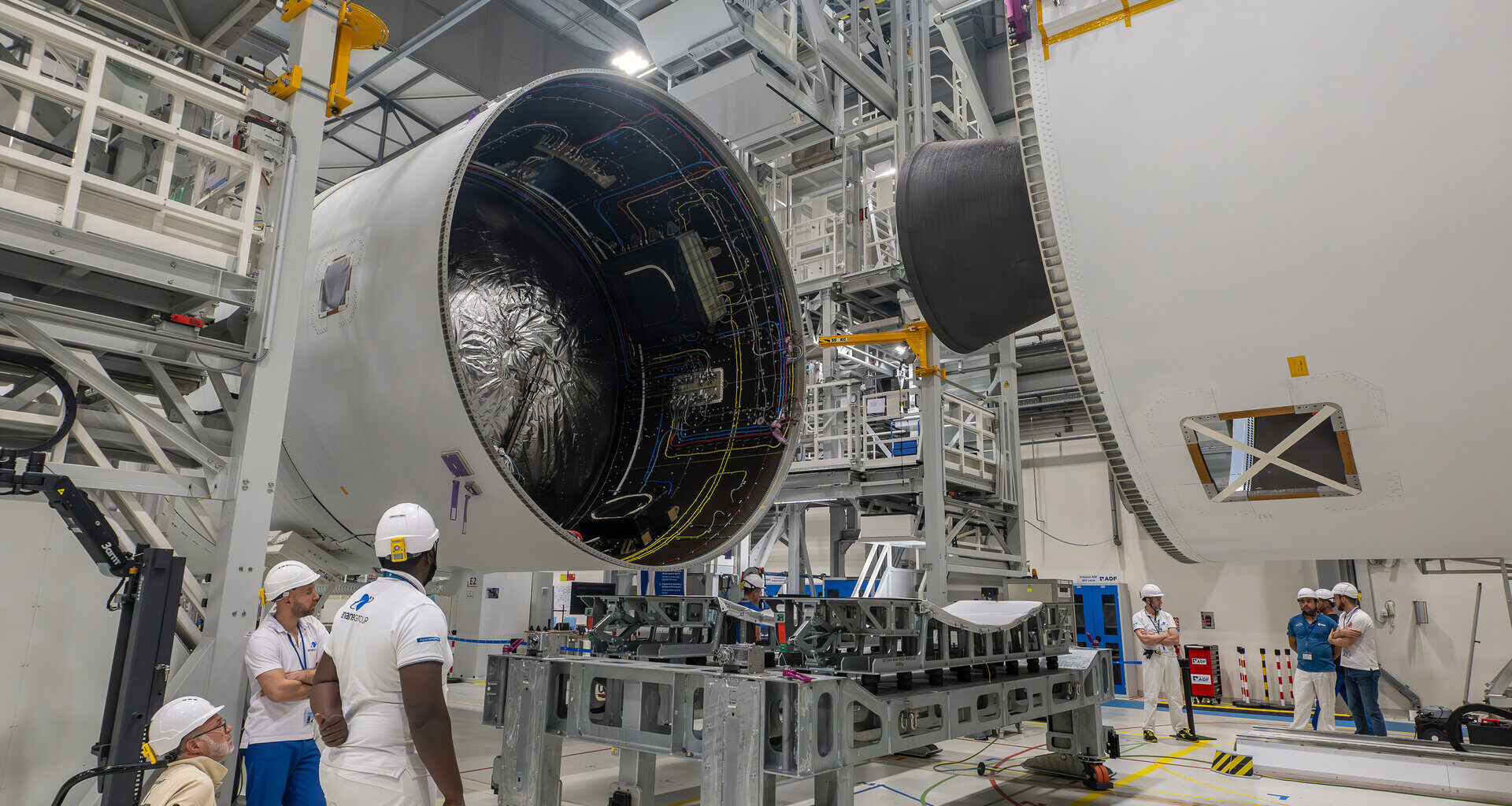Enabling & Support
21/10/2025
207 views
1 likes
A founding member of the European Space Agency (ESA), Belgium’s influence extends far beyond its borders. In Redu, the European Space Safety and Education Centre (ESEC) hosts an ESTRACK ground station of approximately twenty antennas enabling ESA to track and communicate with satellites. ESEC also houses the control centre for daring technology demonstration missions such as Proba-3, the world’s first precision formation flying mission. Belgium is also a valuable contributor to Ariane 6, representing a 3.8% share of the whole programme.
SABCA, Safran Aero Boosters, Thales Alenia Space SPACEBEL, Beblue and Equans Belux are all Belgium-based companies providing essential elements for ESA’s heavy-lift rocket, allowing it to stay on track, launch safely and keep propellant secure.
This series of articles is looking at the parts and components needed to assemble the Ariane 6 rocket – supplied by companies from the 13 ESA Member States participating to the Ariane 6 programme. Together they contribute the best of their know-how to build Europe’s heavy-lift launcher under the guidance of main contractor ArianeGroup who also designed the Ariane 6 rocket.
SABCA – keeping rockets on track
Connecting Ariane 6 central stages
SABCA makes sure rockets stay on the right path by building the Thrust Vector Control systems for the upper, core stage and booster engines of Ariane 6.
The Belgium-based company provides the system that keeps launchers on course by directing the rocket exhaust in the right direction.
The Thrust Vector Control systems are housed inside the structure that connect the central stages of the Ariane 6 rocket.
Safran Aero Boosters – leaving no propellant behind
Ariane 6 core stage verticalisation for VA265
Safran Aero Boosters supplies chamber valves for both Ariane 6 engines. The chamber valves inside the Vinci engine that powers the Ariane 6 upper stage, control the hydrogen and oxygen supply to the engine’s combustion chamber.
Lower down the rocket Safran also supplies the Vulcain 2.1 chamber valves that are part of the Ariane 6 main engine and provide a very tight seal when closed and a smooth flow when open – operating at temperatures just 20 degrees above the coldest possible temperature in the Universe (-273°C), while stopping the smallest molecule in the Universe, hydrogen, from passing when needed.
Thales Alenia Space – a major and long-standing partner
Since the early 1970s, Thales Alenia Space in Belgium has developed and manufactured over two thousand pieces of equipment for European launchers, including equipment for all Ariane rockets.
The company is responsible for Ariane 6’s range safeguard system. The system initiates the explode command, ensuring the launcher will not endanger people or property if ever it veers off course. The electronics at the heart of this system are designed and built by Thales Alenia Space in Belgium. Hopefully, Ariane 6’s range safeguard system will never be used, but it must exist.
Thales Alenia Space in Belgium is also responsible for the electronic equipment for the power supply and control of each stage’s Ariane 6 thrusters through its relationship with SABCA.
SPACEBEL – translating rocket lingo
PrestoPlot, an analysis tool developed by SPACEBEL for and with France’s space agency CNES, helps analyse Ariane 6’s telemetry parameters in real time. Telemetry – sending and reading commands and data from a distance – is the only way to communicate with the rocket from ground control. The interactive plotting tool helps visualise large volumes of data, including measurements, commands, alarms and messages of any kind.
Try it out for yourself if you want, because why not, it’s free.
BeBlue – for more sustainable hydrogen
Hyguane: low-carbon hydrogen for Ariane 6 and Europe’s Spaceport
BeBlue runs an ESA test centre for propulsion components and systems. Components such as the Vinci engine’s turbopump bearing were qualified at Beblue.
Beblue is also one of the companies responsible for project Hyguane, a €40.5 million investment from ESA and CNES to build a solar farm and the distribution systems to produce low-carbon hydrogen at Europe’s Spaceport, in French Guiana. This investment will allow the production of hydrogen through solar-powered electrolysis of water, a more environmentally-friendly method compared to the current steam-reforming of methanol process that uses carbon-based sources to make the fuel for Ariane 6.
Once operational, the facility is expected to supply 12% of the hydrogen to operate Ariane 6 for nine flights a year, which represents saving over 3000 tonnes of equivalent carbon dioxide per year.
Equans Belux – keeping things cool
Equans Belux has been a supplier for Europe’s spaceport for a long time now. With Ariane 6, that is not going to change. Equans Belux was even the first Belgian company to be assigned to Ariane 6.
The company is responsible for the development of the heating, ventilation and air conditioning installations in the buildings located in the launch zone. Air-conditioning installations control the temperature, humidity, and purity of the air, critical conditions when dealing with satellites and rockets.
Ariane 6 launch zone at Europe’s Spaceport in French Guiana
Like
